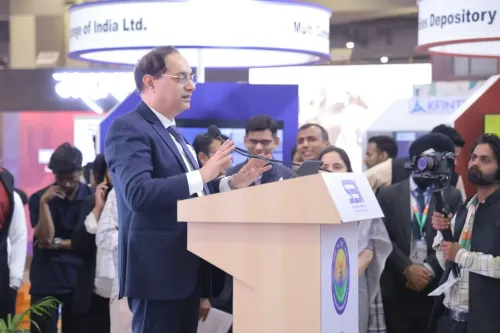Will India’s Semiconductor Market Reach $110 Billion by 2030?
Synopsis
Key Takeaways
- India's semiconductor market projected to reach $110 billion by 2030.
- Prime Minister Modi announces Made-in-India chips by 2025.
- Union Cabinet approves Rs 4,600 crore for four semiconductor projects.
- Over 60,000 students being trained for semiconductor skills.
- Ten ISM-approved projects across six states.
New Delhi, Aug 16 (NationPress) India’s semiconductor market is projected to hit around $110 billion by 2030, positioning the nation as a reliable hub within the $1 trillion global semiconductor sphere, as outlined in a recent report.
During his 79th Independence Day address from the Red Fort, Prime Minister Narendra Modi announced that Made-in-India semiconductor chips will be available by the end of 2025, marking a significant achievement in India’s endeavor for technological independence.
This week, the Union Cabinet greenlit four semiconductor projects worth Rs 4,600 crore. These initiatives are expected to generate around 2,000 skilled jobs in India, with the potential for many more indirect opportunities, as reported by India Narrative.
At present, Taiwan manufactures approximately 90 percent of the advanced chips required by India. The establishment of these new Indian facilities will guarantee a stable local supply of chips for telecom, electric vehicles, and defense, thereby enhancing economic resilience and reducing strategic vulnerabilities.
The report emphasizes that chips that are Designed and Made in India can compete within global supply chains as businesses seek alternatives amid the ongoing US-China tensions.
Odisha will host two new projects, while Andhra Pradesh and Punjab will each gain one. Following these approvals, there are now ten India Semiconductor Mission (ISM)-approved projects across six states.
Over 60,000 students are currently being trained in semiconductor-related skills, equipping the workforce that India needs to meet both domestic and international demands.
SiCSem Private Limited in Odisha is set to establish India’s first commercial compound semiconductor fabrication facility, focusing on sectors reliant on silicon carbide (SiC) devices, including defense, electric vehicles, trains, and energy infrastructure.
3D Glass Solutions Inc. in Odisha aims to develop an advanced packaging and embedded glass substrate plant, which will provide state-of-the-art chip packaging—a significant advancement for the AI, communications, and photonics industries, according to the report.
ASIP Technologies in Andhra Pradesh, in collaboration with South Korea’s APACT, will set up a plant catering to consumer, automotive, and communications electronics. Meanwhile, Continental Device India Ltd. in Punjab will manufacture more MOSFETs and IGBTs, crucial for renewable energy, EVs, automation, and industrial digitization.
The anticipated products will have extensive applications in defense, high-performance computing, artificial intelligence, RF and automotive, photonics, and co-packaged optics, among others.









